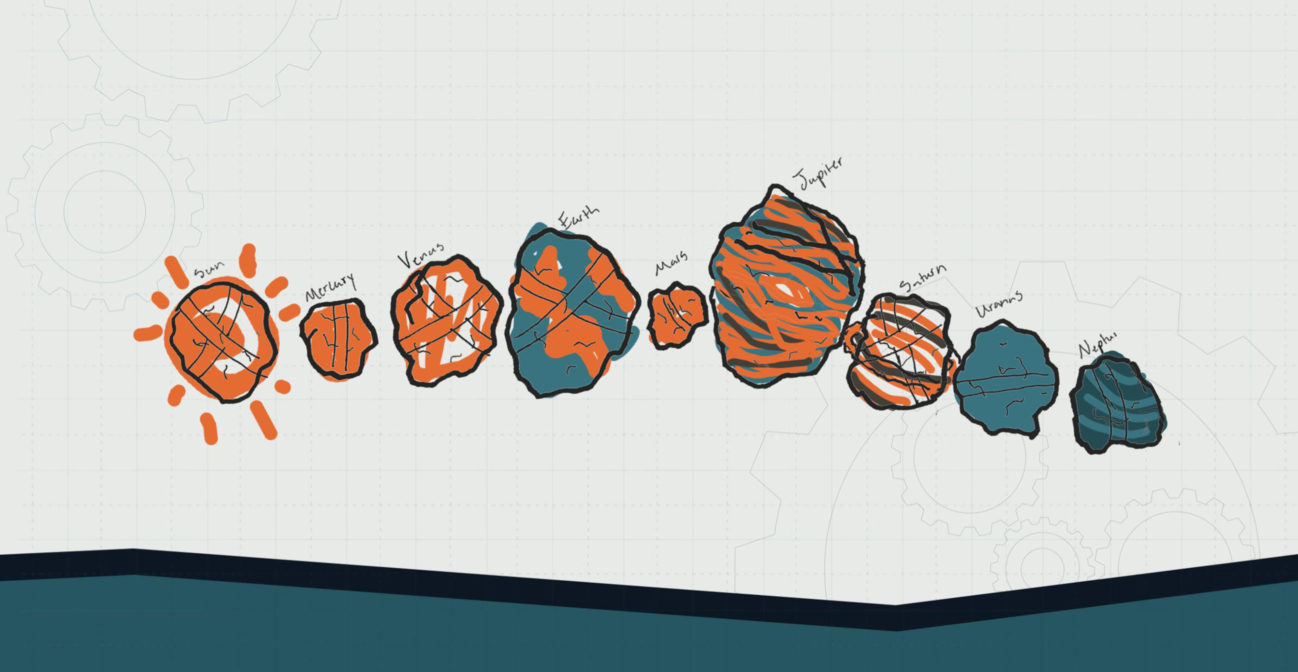Join us for conversations that inspire, recognize, and encourage innovation and best practices in the education profession.
Available on Apple Podcasts, Spotify, Google Podcasts, and more.

ELEMENTARY SCHOOL — LEVEL 3
We live in a gravitationally-bound system called the Milky Way, which consists of the sun and its orbiting planets. In this project, we will study the planets and their composition by building models of them using rubber bands. The colors of bands we use will represent the elemental composition of the planets.
MATERIALS NEEDED:
❏ Rubber bands: red, green, yellow, blue, and white.
❏ Yellow cardstock
❏ Scrap paper
DIRECTIONS:
OBJECTIVE: Kids will be able to observe the day and night sky and use simple building exercises to help support what they observe.
ESSENTIAL QUESTION(S):
1. Take child outside at various times of the day to observe what is visible in the sky and where they are.
a. Child may observe the moon and the sun (don’t look directly at the sun!)
b. Child draws what they see and time of day.
2. Host an astronomy night.
a. Child observes what they see in the night sky:
i. Moon, stars, planets (maybe they mistake them for stars)
ii. Child should check with several hours in between and more than one night
b. Child draws what they see and time of night
1. Read literature about space and Earth
a. Hello, World! Solar System, Jill McDonald
b. A Child’s Introduction to the Night Sky, Meredith Hamilton
c. There’s No Place like Space, Tish Rabe
d. Construct Elastic Solar System with child.
e. Use their solar system to talk about the motion of the various celestial objects they observed.
1. Child uses their model to demonstrate and explain the motion of the planets and the observed sky.
a. Planet rotating:
i. Day/night
ii. Stars motion
iii. Stars visible vs. not visible
b. Moon revolving around the earth.
c. Other planets around the sun.
NGSS CONNECTION:
1-ESS1-1. Use observations of the sun, moon, and stars to describe patterns that can be predicted.
COMMON CORE CONNECTION:
ELA/Literacy
W.1.7 Participate in shared research and writing projects (e.g. explore a number of how-to books on your topic and use them to write a sequence of instructions).
W.1.8 With guidance and support from adults, recall information from experiences or gather information from provided sources to answer a question.
Mathematics
MP.2 Reason abstractly and quantitatively.
MP.4 Model with mathematics.
DOK:
Level 1: Recall
Level 2: Concept